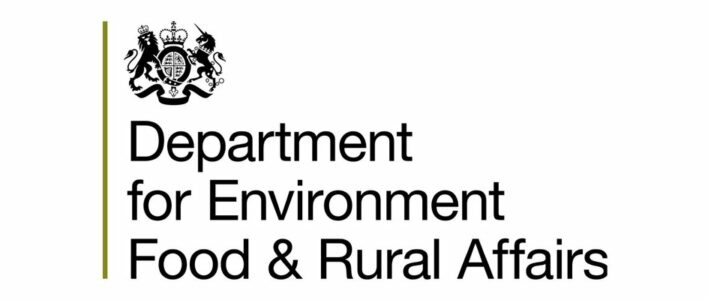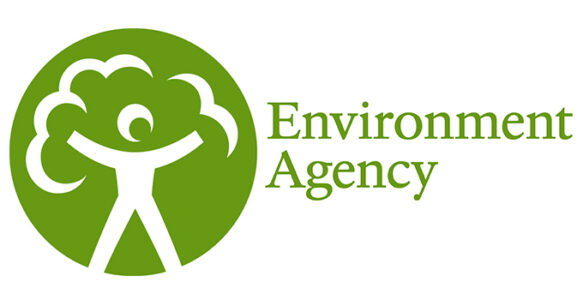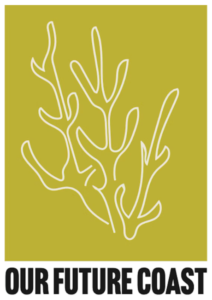Working with nature to safeguard our coastal communities.
Information on this page has been provided by the Our Future Coast Project Team and was correct at the time of upload. The Flood Hub is not responsible for any information held on this page.





Our coastline is formed by an array of different environments and habitats. Our Future Coast is working to restore two key coastal environments, saltmarsh and sand dune.
A saltmarsh is a coastal wetland, flooded and drained by the tide and covered by salt-tolerant plants. Saltmarshes form in sheltered locations away from high wave energy, like estuaries, and where there is a sufficient supply of sediment. They are important habitats, carbon stores and natural buffers to waves and erosion.
Sand dunes are natural mounds or ridges of sand shaped by the wind, commonly found along coastlines. Formed by the accumulation of windblown sand particles, sand dunes are dynamic and gradually build up over time. They are vital for protecting coastlines, acting as natural buffers against waves and erosion.
Please click here to return to the Our Future Coast Homepage
Coastal erosion is the natural movement of sand and sediments due to waves, tides, and storms, which can shift coastlines and erode land. Coastal flooding occurs when high tides and storms push water beyond the shore, causing floods. Heavy rain and river overflow can also contribute to flooding. As sea levels rise, it’s crucial to adapt and protect our coastal communities through projects like Our Future Coast.
The coastline is a constantly evolving. Our coastal landscapes are continually shaped by natural forces and human activities. Coastal environments are naturally dynamic, with processes such as erosion, sediment transport, and sea level rise driving continual change.
Coastal erosion is a natural process where waves, tides, and storms move sand and sediments along the shore. This causes sand dunes and coastlines to shift and change over time. In some areas, the sea can wash away the land, making the shoreline move closer to the land.
Coastal flooding happens when high tides, strong storms, and big waves push water beyond the usual shoreline and onto the land. This can cause flooding in coastal areas. Heavy rain and river overflow during storms can also lead to flooding, sometimes causing what looks like coastal flooding but is actually surface water flooding if water can’t drain off the land.
Throughout history, coastal areas have shifted and transformed. Historically, we have adapted and worked to manage these natural changes. What is now clear is that sea level rise is posing a very big challenge and change is happening fast. This means we must increase our efforts through projects like Our Future Coast to adapt and learn how to work with nature, natural habitats and natural coastal processes to protect our communities. We want to make a safe and more sustainable future for our coastal communities.
Please click here to return to the Our Future Coast Homepage
Sand dunes and salt marshes play a key role in coastal protection, but their value as ‘soft’ defences has often been overlooked. In NW England, much of the coast is made up of natural habitats like saltmarshes, sand dunes, and mudflats, which help protect the shoreline.
Working with nature means encouraging these habitats to thrive and protect the coast. It can mean helping sediment stay in place, trapping sediment if it is being lost, and supporting the growth of saltmarsh and dune plants. Our coastline is always changing. The habitats, sediments and shoreline shift over time due to natural processes like currents, tides, and storms. As sea levels rise, saltmarshes can grow, trapping sediment, and helping to protect the land.
Nature-based solutions create a more natural coastline, increase biodiversity, and can even trap carbon. They can be a more cost-effective and sustainable alternative to traditional hard defences.
By combining nature-based solutions with traditional flood defences, we can better protect communities from future sea level rise and increased storminess.
Please click here to return to the Our Future Coast Homepage
Monitoring coastal change is fundamental to how our coast is managed. Around the Northwest, the Northwest Regional Coastal Monitoring Programme are responsible for collecting and sharing data. Our Future Coast is using this data, alongside innovative techniques such as radar, to inform the development of site-specific strategies.
Our Future Coast is working with CoastSense to use radar equipment to monitor changing currents, waves and sediment movement in different coastal locations. The radar provides high frequency temporal and spatial data to provide a detailed insight into how the local coast is changing.
Our Future Coast are utilising mini-buoys to measure coastal currents around saltmarshes on local scales. Developed by an academic research team from the University of Glasgow, the buoys provide a low-cost and open-source method for collecting data and informing coastal change.
For more information, please visit www.coastsense.com.
Please click here to return to the Our Future Coast Homepage
The management of our coast is guided by a long-term Shoreline Management Plan, or SMP.
The SMP sets out the most sustainable approach for managing flooding and erosion along sections of the coast for the next 100 years. The plan is separated into short (2005 – 2025), medium (2025 – 2055) and long term (2055 – 2100) epochs. Each epoch is designated a preferred policy approach from one of four options:
Please click here to return to the Our Future Coast Homepage
The long-term policy for managing the coast is set out in the Shoreline Management Plans. The Adaptive Pathway set s out the route that is proposed to deliver these policies and also identifies trigger points for when action needs to be taken.
The Adaptive Pathway sets out the most sustainable approach for delivery of the policies set out in the Shoreline Management Plan. It identifies key trigger points when action needs to be taken such as when defences need to be renewed. It also considers the sensitivity of this pathway to factors such as coastal and climate change and identifies regular review points. Key to the Our Future Coast project is to consider how and when Nature Based Solutions can be used and how and when stakeholders need to be involved.
Please click here to return to the Our Future Coast Homepage